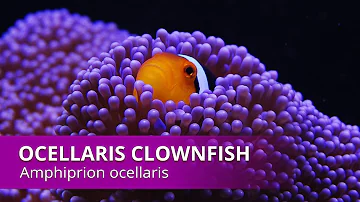
How big do Ocellaris clowns get?
4.3 inches
Description. The common clownfish is a small fish which grows up to 11 cm (4.3 inches).
What kind of anemone fish is Nemo?
ocellaris clownfish
Nemo and his dad, Marlin, are ocellaris clownfish, also called false clownfish or clown anemonefish. Anemonefish are so-named for the sea anemones in which they make their homes. There are 28 species of anemonefish, and they come in many colors, such as pink, red, yellow, black, brown and multi-colored stripes.
What is the most common clownfish?
The 9 most popular clownfish are:
- True Percula Clownfish.
- Tomato Clownfish.
- Clarkii Clownfish.
- Orange Skunk Clownfish.
- Naked Cinnamon Clownfish.
- Gold Stripe Maroon Clownfish.
- Picasso Clownfish.
- Pink Skunk Clownfish.
Are clownfish osteichthyes?
The members of Osteichthyes represent an extraordinary diversity of forms, including the « living fossil » coelacanths, long « sea-serpent » oarfish, tiny cichlids, whiskered catfish, colorful clownfish, voracious piranhas, unique seahorses, and so forth.
What do Ocellaris clownfish eat?
algae
In nature the diet of clownfish consists of crustaceans (such as copepods and amphipods), algae, polychaete worms and leftovers from the anemone’s meal. Our captive bred fish are conditioned to eat a variety of aquarium diets including pellets, flake food, frozen Mysis shrimp, and frozen brine shrimp.
What family is a clownfish in?
Pomacentridae
Poisson-clown/Famille
Clownfish Classification and Scientific Name The scientific name for the clownfish is Amphiprion ocellaris. The term Amphiprioninae is derived from Greek, with “amphi” meaning “both sides” and “prion” meaning “saw.” These fish are members of the class Actinopterygii, the order Perciformes, and the family Pomacentridae.
Can male clownfish turn into female?
Clownfish all begin life as male, but can all carry both female and male reproductive organs. … These immature males can turn into females if the alpha female dies. The social structure of clownfish and its ability to change sex may be related to the clownfish’s chosen habitat — the sea anemone.
How do clownfish mate?
Clownfish are external breeders, meaning that the female fish lays eggs and then the male fish fertilizes them after they have been laid. To make this happen you will need to get a pair of clownfish that are already bonded, in other words mated to each other.
Which clownfish is peaceful?
Gold Striped Maroon Clownfish (Premnas biaculeatus) There you have it—the good, the bad and the ugly (actually the hardiest, the most peaceful and the aggressive) of clownfishes.
Are Ocellaris clownfish endangered?
Not extinct
Poisson-clown à trois bandes/État d’extinction
What class does Amphiprion ocellaris belong to?
- The species Amphiprion ocellaris belongs to the class Actinopterygii which contains bony Teleost fish and other ray-finned fish. A. ocellaris is the most basal species in the genus Amphiprion which is closely related to the genus Premnas. The species’ most closely related ancestor is Amphiprion percula, the orange clownfish.
What is the difference between clownfish A ocellaris and A percula?
- Ocellaris. Ocellaris clownfish have characteristics that are different from A. percula, including a more narrow black edging outlining the white stripes, black iris of their eyes (compared to an orange iris in A. percula) and 10-11 spines of the first dorsal fin (compared to 9-10 dorsal fin spines in A. percula).
How many species of Amphiprion are there?
- Identification: There are 30 species of Amphiprion (Eschmeyer et al. 2018) with color pattern being the most important feature for identification (Fautin and Allen 1992). The more common species in the pet trade, A. ocellaris and A. percula, are orange with three white bars.
How does ampiprion ocellaris find host anemones?
- Ampiprion ocellaris is able to find host anemones by olfactory imprinting that occurs while in the nest (Arvendlund and Nielsen 1996). ( Arvedlund and Nielsen, 1996; Thresher, 1984) Planktonic food such as zooplankton, copepods, and algae are the primary source of food for A. ocellaris (Myers 1999).
